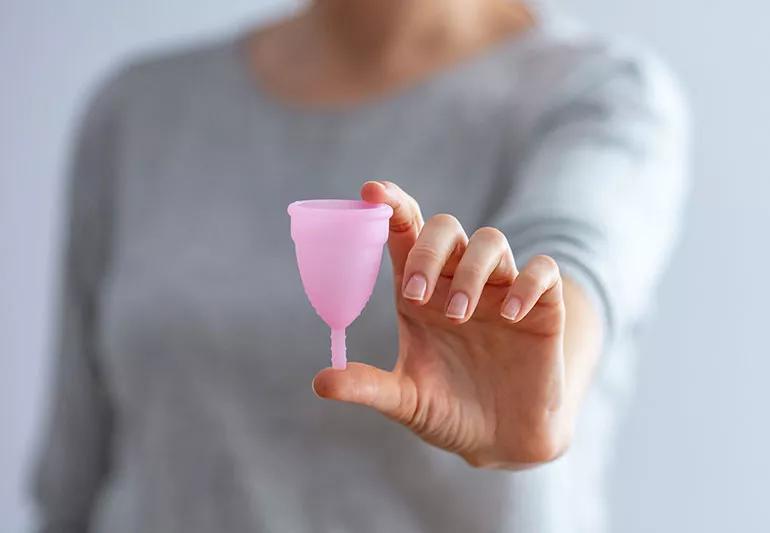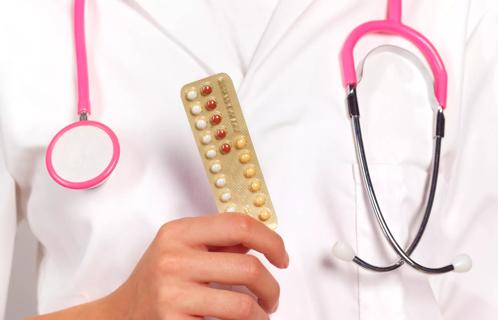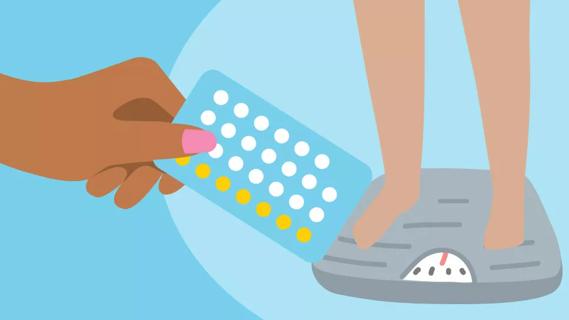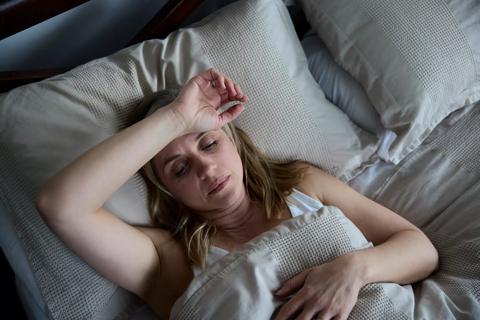Advertisement
They’re eco-friendlier and more cost-effective than pads and tampons

Periods are no walk in the park. If you’re not dealing with cramps, you’re trying to make sure you’re well protected during your heavier days.
Advertisement
Cleveland Clinic is a non-profit academic medical center. Advertising on our site helps support our mission. We do not endorse non-Cleveland Clinic products or services. Policy
Some of us can wear just a tampon or a maxi pad. Others have to double up and wear both — and change them frequently. If you’re dealing with this month after month, you’re probably wondering if there’s a better, more convenient and eco-friendly way to go with your flow.
Enter menstrual cups.
Menstrual cups have become a popular alternative to tampons and pads. Some are long-lasting and reusable, while others are disposable. But should you make the switch just because everyone seems to be doing so right now?
Keep reading to learn more about how menstrual cups work and to get some helpful tips from gynecologist Erin Higgins, MD.
A menstrual cup is a flexible cup that’s designed for use inside of your vagina during your period to collect blood. The cup doesn’t absorb your menstrual flow as tampons or pads do.
While it might seem like menstrual cups popped up overnight, they’ve actually been around in some form since the 1800s. The first patent for a menstrual cup design was awarded in 1867 and the prototype was pretty much a rubber sack that was attached to a ring.
This early version was meant to be inserted into the vagina to collect blood. The menstrual cup could then be pulled out by a cord that was attached to it.
Today, more and more of us are using menstrual cups. They’ve been proven to be safe and very effective. Another benefit of using them — they’re more eco-friendly than pads and tampons.
And while sales didn’t take off when they were first introduced commercially, the global market for menstrual cups is now expected to hit $1.89 billion by 2026.
There are different brands available in most stores and online. And most come in small or large versions.
The smaller version is best for those with a light or medium flow or those younger than 30 years old. The larger version works for those with a medium or heavy flow, are older than 30 or have had a baby.
Most menstrual cups are made of silicone or rubber. If you’re sensitive to latex, you’ll want to buy silicone cups to avoid any issues.
Follow these steps to successfully insert a menstrual cup.
Advertisement
Ready to take out the cup? Here’s how to do it.
“You can use a cup all the way through your cycle, but you might need to change it more often on heavy flow days to guard against leaking. To do this, just remove and rinse your cup after 12 hours, or when leaking occurs,” advises Dr. Higgins.
Advertisement
So, are menstrual cups right for you? Here are the benefits and risks of using them.
Advertisement
Menstrual cups have plenty of benefits, but how can you know if they’re best for you?
Dr. Higgins says the only way to know if a menstrual cup will work for you is to buy one and give it a try.
Remember, they come in various formations and sizes, so if the first one doesn’t suit you, the next size might do the trick.
“But it never hurts to do a little research,” encourages Dr. Higgins. “So, compare the options that are out there and read the reviews to see what others are saying.”
Advertisement
Learn more about our editorial process.
Advertisement

While it’s probably not your most fertile time, it is possible to get pregnant if you have unprotected sex during your period

The scenarios vary based on how many pills you’ve missed and whether you take a combination pill or progestin-only pill

Despite popular opinion, scientific research shows that most birth control methods don’t contribute to weight gain

Both are needed for a healthy body

Heat starts in your chest and moves up to your neck and face … and then, the sweating begins

While they may not burn calories or cause fevers, these heat waves can make you miserable — but you don’t have to just grin and bear it!

Taking precautions like eating healthy, stopping smoking and getting regular screenings can help protect against breast cancer

It’s a natural part of aging, starting with perimenopause and eventually leading into postmenopause

Focus on your body’s metabolic set point by eating healthy foods, making exercise a part of your routine and reducing stress

PFAS chemicals may make life easier — but they aren’t always so easy on the human body

While there’s little risk in trying this hair care treatment, there isn’t much science to back up the claims